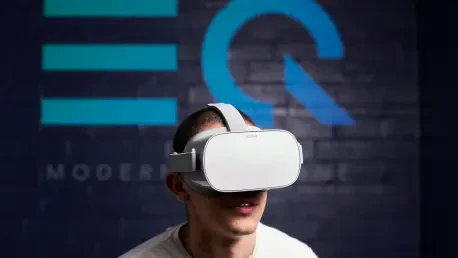In the rapidly advancing landscape of technology, ultra-realistic virtual prototypes are emerging as pivotal tools in reshaping the process of product development. These sophisticated digital simulations transcend the traditional boundaries of 3D modeling, empowering industries such as automotive, aerospace, consumer electronics, and healthcare to envision, test, and refine their products with unprecedented accuracy. By harnessing AI-driven techniques and photorealistic rendering, these prototypes offer a remarkably precise reproduction of real-world conditions, stimulating a shift in how new products are designed, tested, and introduced to the market. As companies strive for efficiency and innovation, ultra-realistic prototypes provide strategic advantages, from reducing costs to enhancing collaboration across global teams, paving the way for a future marked by seamless integration and cutting-edge creativity.
Immersive Visualization and Strategic Impact
Ultra-realistic virtual prototypes offer profound benefits that bolster strategic and operational efficiency within businesses. Precise replication of materials, lighting, physics, and user interaction allows for comprehensive visualization, enabling rapid iterations in design phases. This advancing technology helps bridge gaps between departments, fostering cohesion and collaboration among teams dispersed globally. The ability to remotely view and interact with digital models strengthens alignment across various functions, ensuring cohesive progression toward shared project goals. Moreover, marketing and sales teams harness these lifelike models to create enticing pitches and previews for stakeholders and potential clients, enhancing the efficacy of product launches preemptively.
The inclusion of physics-based simulation engines further enhances this transformation, providing qualitative insights into real-life conditions. These engines simulate scenarios where material dynamics and stress factors play pivotal roles, preventing wastage, reducing costs, and enabling sustainable practices in prototyping stages. By integrating these prototypes into workflows, companies unlock the potential to iterate design ideas rapidly, yielding smarter decisions that resonate with business objectives and environmental concerns.
Extended Reality: Elevating User Experience
Extended reality technologies, including virtual reality (VR) and augmented reality (AR), elevate the user experience inherent in these digital prototypes. By immersing designers and engineers in high-fidelity virtual environments, XR technologies facilitate profound understanding and manipulation of complex models. The real-time interaction with prototypes leads to smarter and more informed design decisions, minimizing production surprises and aligning the end product more closely with initial design intentions. This immersive approach transforms the traditional design paradigm, supporting engineers and designers in anticipating potential issues and crafting solutions well before physical testing begins.
Incorporating user-centric engagement strategies further amplifies these advantages. Companies leverage ultra-realistic virtual prototypes in focus groups and beta testing programs to gather pertinent feedback from actual users, refining their designs based on real-world responses. This iterative feedback loop mitigates risks associated with flawed design, ensuring that products resonate with user expectations and needs once launched. By fostering these user interactions early in development phases, companies significantly enhance customer satisfaction and loyalty.
A Catalyst for Sustainable Practices
The integration of ultra-realistic virtual prototypes is swiftly becoming a game-changer in product development, with far-reaching implications for sustainable practices across industries. These digital tools enable companies to navigate complex design landscapes with precision, reducing reliance on resource-intensive physical prototypes. As they become more accessible, these virtual simulations are expected to lay the groundwork for sustainable and efficient processes, bridging the gap between concept and reality seamlessly. Companies that harness the full potential of these prototypes stand poised to enjoy substantial return on investment and enhanced competitive advantage.
However, realizing these benefits requires significant investment in advanced computing infrastructure and skilled professionals capable of operating and interpreting complex digital simulations. It also demands a culture of cross-functional support and collaboration to ensure successful integration. As the industry continuously evolves, these requirements are anticipated to be met with growing ease, further solidifying the role of ultra-realistic prototypes as standard tools in modern product development practices.
Conclusion: The Promise of Innovation
Ultra-realistic virtual prototypes provide significant advantages, enhancing both strategic and operational efficiencies in businesses. These models accurately replicate materials, lighting, physics, and user interactions, allowing for detailed visualization and quick design iterations. This evolving technology helps bridge departmental divides, improving cohesion and collaboration among global teams. The ability to view and interact with digital models remotely ensures alignment across different functions, promoting unified progress towards shared project goals. Additionally, marketing and sales departments use these realistic models for compelling pitches and previews, boosting the effectiveness of product launches ahead of time.
Incorporating physics-based simulation engines adds another layer of benefit, offering insights into real-world conditions. These engines replicate scenarios involving material dynamics and stress, minimizing waste, cutting costs, and encouraging sustainable practices in prototyping. By incorporating these prototypes into workflows, companies can rapidly iterate on design ideas, leading to smarter decisions that align with both business goals and environmental objectives.









